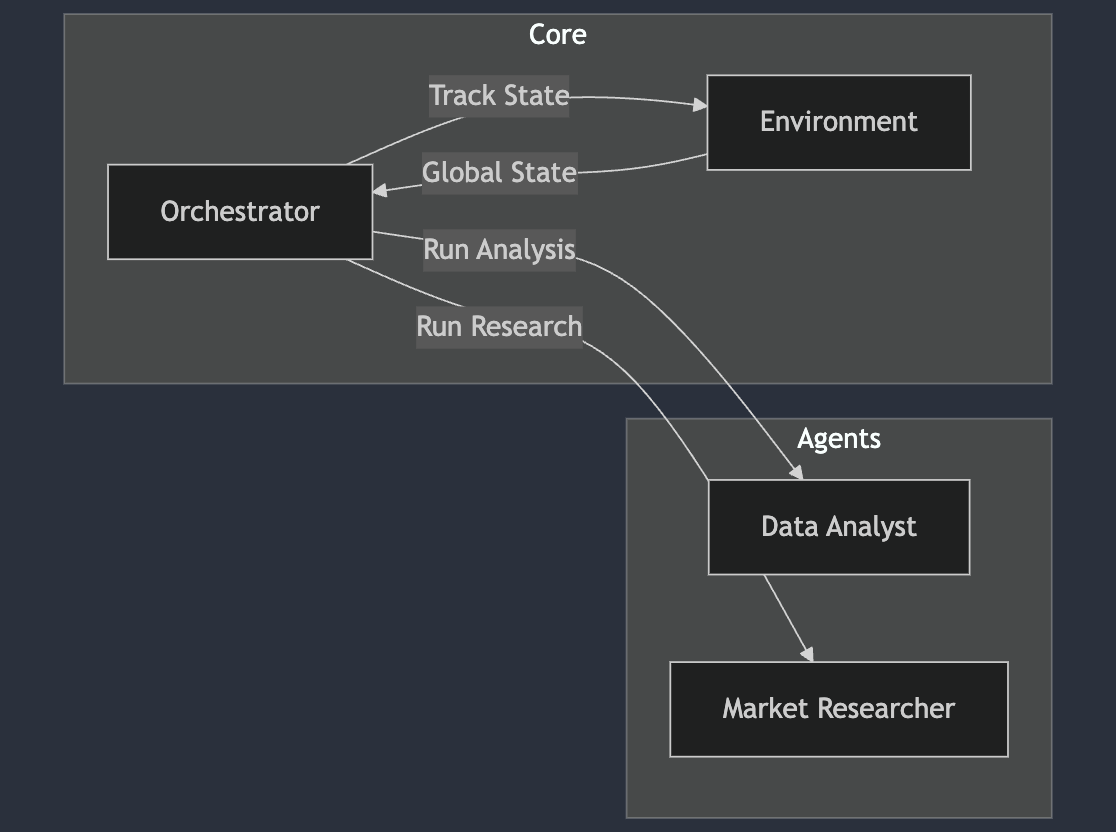Building Environment Modules for Multi-Agent Systems
Welcome to our course on building environment modules with Naptha!
Before we dive in, let's understand where environment modules fit in Naptha's multi-agent ecosystem.
What Are Environment Modules?
Environment modules provide shared state for multi-agent workflows, acting as a common space where agents can interact and share information.

Please note that this course continues our financial analysis example to illustrate how environment modules function hypothetically. In practice, using a storage provider or knowledge base might be more suitable. In the expert track, we'll cover these alternatives, helping you choose the right option for your specific needs.
State Management Options in Naptha - When to Use Environment Modules?
Before we start building, let's take a quick look at the different state management options available in the Naptha ecosystem for our multi-agent system.
We currently have three options at our disposal:
-
- Direct database access
- Basic persistence needs
-
- Particularly useful when your state logic will be used across different orchestrators or when providing services to agents.
- More high-level than Storage Provider
- Can include user profiles, reputation systems e.g WikipediaKB
-
Environment Modules
- Shared state for multi-agent workflows
- Game-like environments/engines
- Complex agent interactions
Check out our groupchat environment module for multi-agent workflows to see an environment module in action.
Simply put,
- If you just need shared state → Use a Knowledge Base module
- If you need simple state persistence → Use Storage Provider directly
- If you're building game-like environments or complex interaction spaces → Use Environment modules
About Our Project - What You'll Learn
We're building a financial environment module that:
- Tracks workflow stages across multiple agents
- Maintains analysis history and results
- Provides state across workflow executions
- Integrates seamlessly with our financial orchestrator
Throughout this course, you'll discover how to:
- 🏗️ Design and deploy environment modules that help agents share state
Project Structure
Course Structure
- Course Overview
- Setup and Core Development
- Environment setup
- Schema design
- Core implementation
- Testing & Deployment
- Next Steps
- Suggestions
- Community resources
Ready to build your environment module? Let's dive into the implementation details!
Questions about storage options? Join our community to discuss your use case →
Click "Next" to get started, or use the keyboard shortcut:
- Mac: ⌘ + Enter
- Windows/Linux: Ctrl + Enter